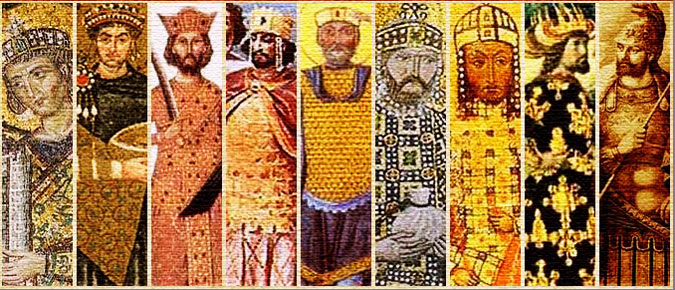The anthroponymical database contains three types of names: baptismal name, byname or sobriquet, and surname which could have been a simple or composite patronymic derived from either father’s or mother’s family name or from both.

In many cases, it is impossible to distinguish sobriquet from patronymic. Byzantine peasants and the middle classes usually identified themselves by baptismal name and sobriquet, which points, as a general rule, to geographical and ethnic origin, profession, personality, or appearance. In the case of naturalized foreigners, a sobriquet could use the old “pre-Byzantine” name that accompanied his baptismal name. Such surnames sometimes become an indispensable element of the person’s name. Persons of the lower and middle classes could be identified sometimes by family links (such as “son of”, “son-in-law of”, “father of”, “wife of”). Individuals of lower classes often held only a single name (mononym), normally a baptismal name.
Byzantines did not always follow either church calendars or ancient tradition when giving first names to their children; the list of Byzantine personal names abounds in unique male and female first names and bynames. There were no strict patterns of name construction. A personal name, as recorded in sources, might consist of one or all of the above elements. In most cases, sobriquets existed within a single generation and did not pass to descendants. Moreover, close relatives having the same ancestors (like full brothers and sisters) might have had different sobriquet or patronymic names. The term “family name”, in the proper sense of the word, should be used with caution because Byzantines had no “family names” in the modern European sense of the term. A person’s sobriquet rarely passed to his descendants. For instance, in Lemnos, in 1425–30, a certain Χατζίλαλα had the son Γεώργιος. Γεώργιος was referred to in monastic documents as ὁ υἱὸς τοῦ Χατζίλαλα, which corresponded to the popular identification “the son of”. However, elsewhere the same person was called “Γεωργίῳ τῷ Χατζίλαλα,” in which his father’s name had become his own byname. Aristocratic and prominent families having high social standing (military and civil officials, prominent intellectuals) used a sort of patronymic, which was a name or a sequence of names indicating an illustrious ancestor. However, the Byzantine usage of these patronymic names was again very dissimilar to a modern European one. First, a person might have used either paternal or maternal family names, or very often the sequence of both. Second, a husband could have taken as his own the patronymic of his nobler wife; this was the case of Ἰωάννης Μασγιδᾶς ∆ούκας who got his patronymic Doukas due to his marriage to Εἰρήνη ∆ούκαινα. Siblings may have had different patronymic names or sequence of names. The children of Κωνσταντῖνος Μασγιδᾶς preferred their maternal patronymic: Εἰρήνη Σφράτζαινα and Ἰωάννης Σφρατζῆς. It is unclear how arbitrary the preference of this or that model of self-naming by a noble person was or if there was strict regularity in name construction. In the thirteenth through the fifteenth centuries, the structure of the imperial family’s names, the Palaiologoi and the Grand Komnenoi, appear the closest to modern European patterns due to the continuance of dynastic names through generations, probably for ideological and ceremonial reasons.
In any case, the use of a patronymic by itself was a marker of a relatively high social status or of noble lineage. In the context of anthroponymic analysis, nobility will mean, on the one hand, high-ranking military and civilian officials and, on the other, the noble owners of family names that had persisted for several generations.
(Source: “The Byzantine Turks, 1204-1461”, by Rustam Shukurov)

Research-Selection for NovoScriptorium: Anastasius Philoponus

My name is John Thomas Lucas, pennsylvania, my family are dutch, german, Irish and im told cuban and possibly Italian. I dont know my families historical roots. Just asking for help
LikeLike
Thank you for contacting us. Regrettably, we cannot help on this one. Good luck!
LikeLike